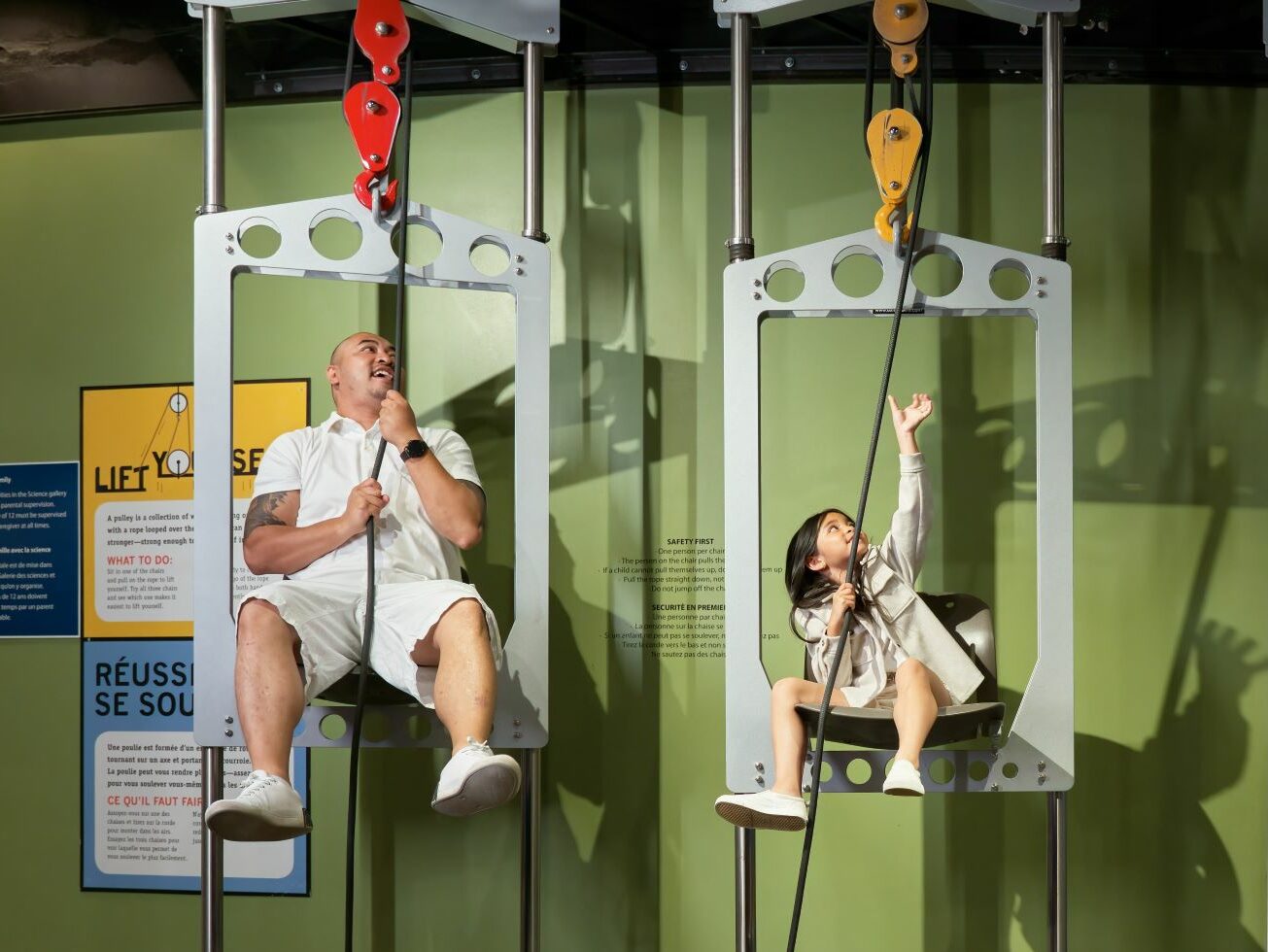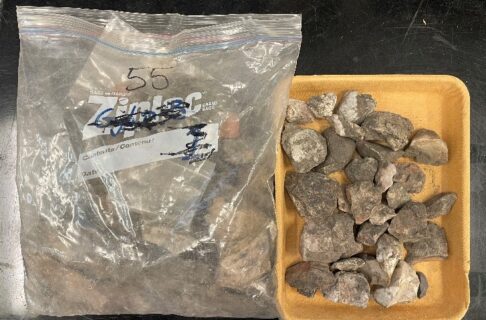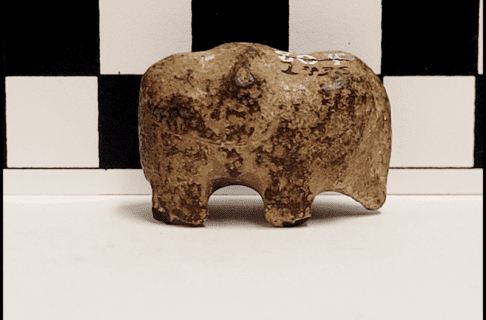Posted on: Thursday July 10, 2025
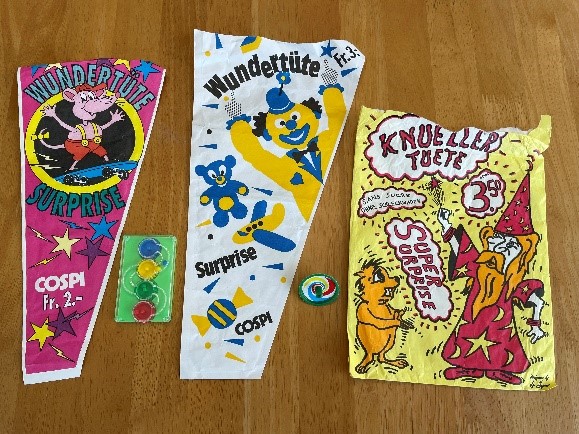
by Sonya Hauri-Thiessen, Collections Technician – Archaeology
When I was younger, I loved opening surprise bags. They came with candy and a toy, and you never knew what surprises lay within. The bags in the photo to the right came from a trip I took to Switzerland in the 1990s (and still have as part of my personal collection because archaeologists save everything!). I still love surprise bags, but now I get to open a different type of surprise bag: one filled with artifacts!
Image: Surprise bags from Switzerland.
Part of my job as a Collections Technician in the Archaeology Department is cataloguing donations that have not been processed yet. Sometimes when a collection arrives it is in a bit of a sorry state after being excavated. One might even choose to use the word filthy when describing some items. They are often still covered in dirt, and it can be hard to tell exactly what each item is. That’s where the fun part starts. After taking an inventory and organizing the donation, I get to wash everything and then discover the artifacts that are revealed! There’s a certain excitement that comes with knowing I am the first person to see an artifact after it has been excavated and cleaned up, especially when I know the item could potentially be thousands of years old. I feel very privileged to be able to work in this field, and I try to remember that as I work with the collections, especially when I am covered in muddy water!
The artifacts in the picture below come from a site in Southwestern Manitoba. When I first laid eyes on the bag it just looked like a bag of dirty rocks, and I didn’t think there would be much inside of note. But lo and behold, after a thorough cleaning, I came away with a beautiful assortment of artifacts, including many different types of stone tools.
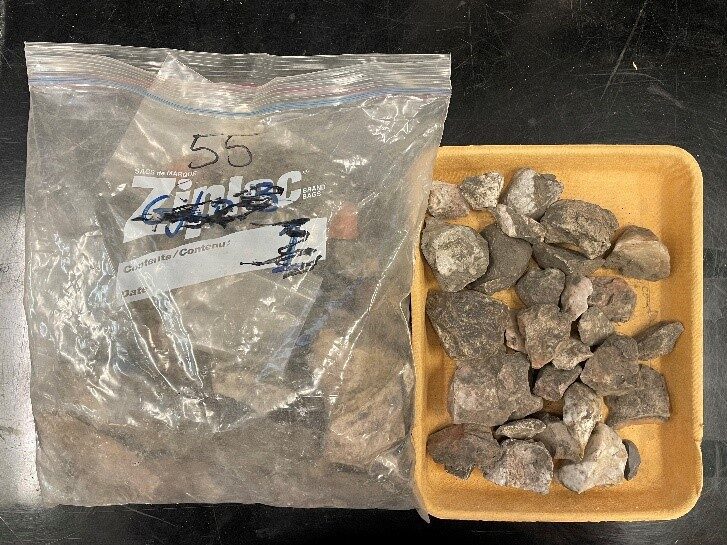
Dirty, unrecognizable artifacts.
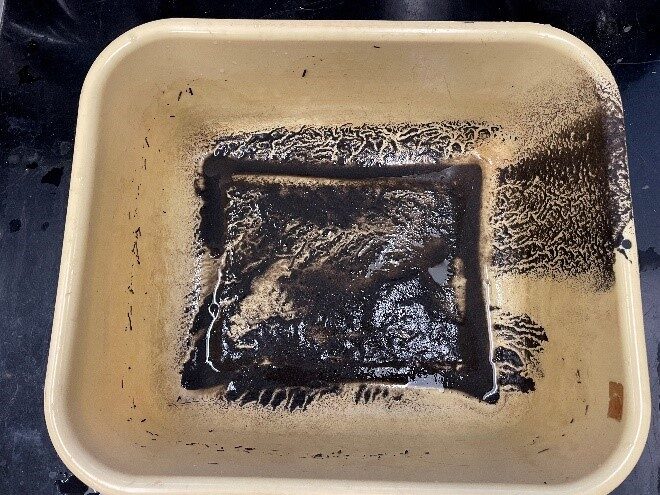
Sludge left over after the artifacts have been cleaned.
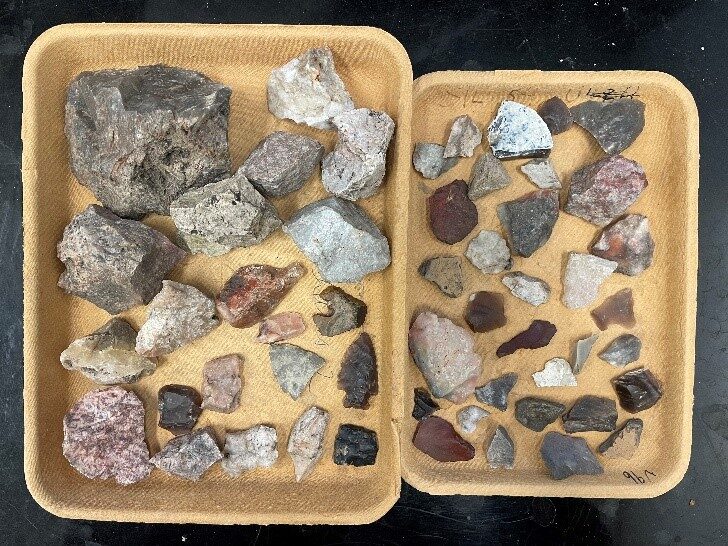
Clean artifacts!
Once the artifacts have been washed and dried, they are identified with the help of the Museum’s comparative collections. These collections have been thoughtfully curated and organized over many years in order to show prime examples of different types of artifacts. After being identified, the artifacts are entered into the Museum’s collections database. Once in the database, a unique catalogue card must be printed for each artifact. Next, the artifacts are labelled using a thin layer of B-72 acrylic resin mixed with acetone and an acid-free paper label that has a unique catalogue number. The artifacts are then put away into our carefully organized storage room. This detailed process of record keeping, as well as maintaining a properly organized collections storage room, is an important part of collections management. It allows us to know the exact location of every artifact at all times and ensures easy retrieval for exhibits or for researchers who want to study our collections.
The archaeology department has over 2.5 million artifacts in its collection. Each artifact has been carefully processed by dedicated Museum employees over the years, all of whom have been lucky enough to work with the wonderful surprises that this fascinating discipline has to offer.
I started working in the Museum world 25 years ago, and I never get tired of the surprises that come in. Come visit the Manitoba Museum – you never know what surprises await you!


